Kingdom Animalia Order Carnivora Genus Herpestes Higher classification Herpestes | Phylum Chordata Family Herpestidae Scientific name Herpestes javanicus Rank Species | |
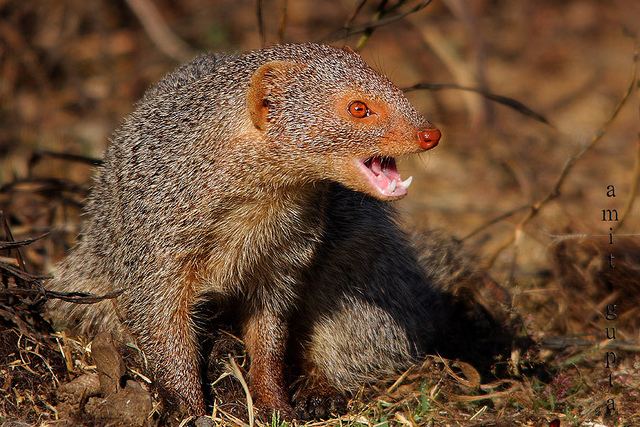 | ||
Similar Mongoose, Herpestes, Indian grey mongoose, Mammal, Short‑tailed mongoose | ||
Small asian mongoose
The small Asian mongoose (Herpestes javanicus) is a species of mongoose found in the wild in South and Southeast Asia. It has also been introduced to Hawaii, the Bahamas, Cuba, Croatia, Jamaica, Hispaniola, Puerto Rico, the Lesser Antilles, Belize, Honduras, Panama, Trinidad and Tobago, Colombia, Suriname, Venezuela, Guyana and Mafia Island. The western subspecies group is sometimes treated as a separate species, the Indian mongoose or small Indian mongoose (Herpestes palustris).
Contents
- Small asian mongoose
- Description
- Distribution and habitat
- Diet
- Behavior and reproduction
- Introduction to Hawaii
- Introduction to St Croix
- Introduction to Okinawa
- Invasive species
- References
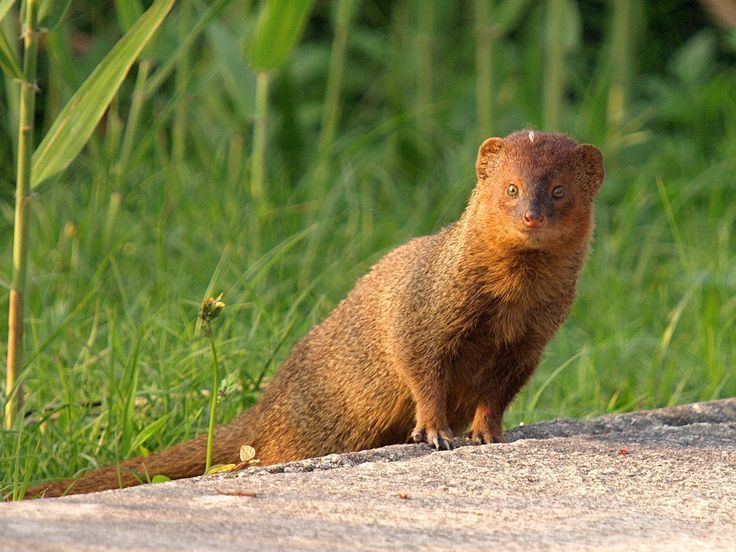
Small asian mongoose
Description

This species of mongoose is sympatric with Herpestes edwardsii in much of its native range and can be readily distinguished from the latter species by its much smaller size. The body is slender and the head is elongated with a pointed snout. The lengths of the head and body is 509-671mm. The ears are short. They have five toed feet with long claws. The sexes differ in size with males having a wider head and bigger size.
They use about 12 different vocalizations.
Distribution and habitat
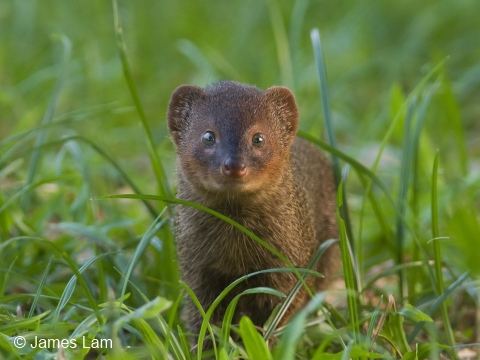
This species occurs naturally throughout most of southern mainland Asia, from Iraq to China, as well as on the island of Java, at altitudes up to 2200 m. It has also been introduced to dozens of islands in the Pacific and Caribbean (including Saint Lucia, Jamaica and Puerto Rico), as well as a few in the Indian Ocean and Mediterranean, as well as to mainland Venezuela. It is capable of living among fairly dense human populations.
Mongooses live in scrublands and dry forest. On Pacific Islands they live in rainforests as well.
Diet
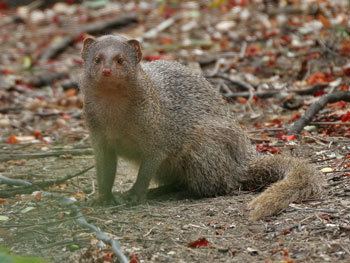
These mongoose mostly eat insects but are opportunistic feeders and will eat crabs, frogs, spiders, scorpions, snakes, small mammals, and birds and bird eggs.
Behavior and reproduction
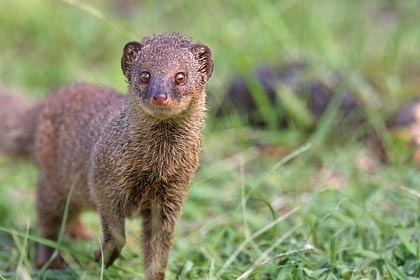
Mongooses are mostly solitary although males will sometimes form social groups and share burrows. Pregnancy duration is up to 49 days. A litter can consist of 2–5 young.
Introduction to Hawaii
The 1800s was a huge century for sugar cane, and plantations shot up on many tropical islands including Hawaii, Fiji and Jamaica. With sugar cane came rats, attracted to the sweet plant, which ended up causing crop destruction and loss. Attempts were made to introduce the species in Trinidad in 1870 but this failed. A subsequent trial with four males and five females from Calcutta however established in Jamaica in 1872. A paper published by W. B. Espeut that praised the results intrigued Hawaiian plantation owners who, in 1883, brought 72 mongooses from Jamaica to the Hamakua Coast on the Big Island. These were raised and their offspring were shipped to plantations on other islands. Populations that have been introduced to these islands show larger range sizes than in their native ranges. They also show genetic diversification due to drift and population isolation.
Only the islands of Lana'i and Kaua'i are thought to be free of mongooses. There are two conflicting stories of why Kaua'i was spared. The first is that the residents of Kaua'i were opposed to having the animals on the island and when the ship carrying the offspring reached Kaua'i, the animals were thrown overboard and drowned. A second story tells that on arriving on Kaua'i one of the mongooses bit a dockworker who, in a fit of anger, threw the caged animals into the harbor to drown.
Introduction to St. Croix
The small Asian mongoose was introduced to St. Croix in 1884, also to prey upon black rats (Rattus rattus) that were ravaging the sugarcane industry. This introduction has had a negative impact on many species of reptiles. For instance, the green iguana (Iguana iguana) has been greatly reduced in number and the St. Croix ground lizard (Ameiva polops) was eliminated from the island of St. Croix (but not from Protestant Cay, Green Cay, Ruth Cay, and Buck Island) before 1962. Ground nesting birds have also been greatly affected. Mongooses have even preyed upon fawns of white-tailed deer (Odocoileus virginianus).
Introduction to Okinawa
The mongoose was introduced onto Okinawa Island in 1910 and Amami Ōshima Island in 1979 in an attempt to control the population of Habu (波布) and other pests; an invasive species, they have since become pests themselves. The efficacy of the mongoose against the habu population was quite limited however since the mongoose is a diurnal creature and the habu is nocturnal. As such they didn't encounter each other as often as had been desired.
Invasive species
Some reports claim that the mongoose introduction did not have the desired effect of rat control, either in Hawaii or St. Croix. The mongoose hunted birds and bird eggs, threatening many local island species. The mongooses bred prolifically with males becoming sexually mature at 4 months and females producing litters of 2–5 pups a year. On Okinawa, the mongoose is known to carry antimicrobial-resistant strains of E. coli.
Conversely, other accounts state that the introduced mongooses successfully saved cane fields and significantly reduced the number of rats, mice, and insects.
Mongooses can carry leptospirosis.
In 2016, the European Commission put the mongoose on the list of invasive alien species in the EU.
